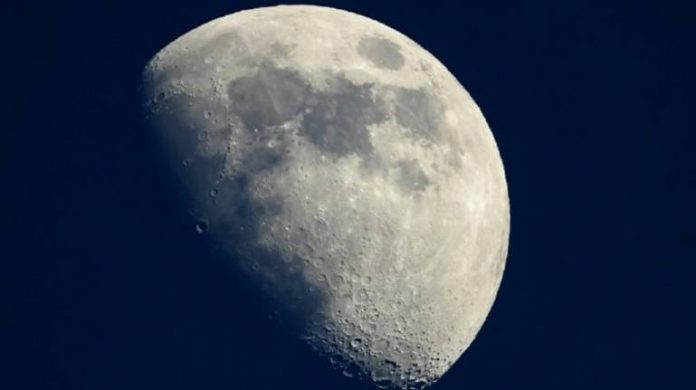NASA is due to announce a new discovery about the Moon that the agency has called ‘exciting’.
The discovery was made following observations by NASA’s SOFIA telescope, which is attached to a modified commercial jet flying high in the atmosphere. The space agency said it will make the announcement next Monday, October 26, claiming it relates to plans for deep space exploration under its Artemis program.
Under Artemis, NASA will launch a mission to put a woman and a man on Mars as soon as 2024.
This is part of an even more ambitious plan to send humans to Mars by the next decade.
The last time humans were sent to the Moon was when the Apollo 17 mission launched nearly 50 years ago.
Apollo 17 was a 12-day mission that broke the record for the longest lunar landing as well as the biggest chunks of the Moon brought back to Earth.
It was supposed to be followed by Apollo 18, which was cancelled.
NASA’s new Moon discovery will be announced by a number of scientists at the agency, including Paul Herts, director of Astrophsics, and Naseem Rangwala, project scientist for SOFIA.
According to US science journal Nature, NASA’s SOFIA mission is under pressure to justify its cost to the US taxpayer of $85 million per year.
US President Donald Trump has suggested cutting funding to the mission altogether, although Germany contributes roughly 20 percent of its budget.
SOFIA is the biggest aeroplane-based observatory in the world. It conducted its first flight in 2007.
Consisting of a 2.5 meter telescope built into a modified Boeing 747, the airborne facility is used to scan the skies with a clearer view of space than it would have on the ground.
This is because the plane is able to fly high above almost all of the atmosphere’s water vapour, which can obscure the view of telescopes on the ground.
Instead of seeing visible light like humans do, the SOFIA telescope observes the universe in infrared light, meaning it can pick up on things we do not.
NASA tends to send SOFIA out at night during flights lasting 10 hours to get the best images possible.
It is capable of viewing the Moon but also cosmic objects much, much further away, including black holes and distant stars.
Meanwhile, NASA’s Artemis programme will involve a number of new technologies.
These include new spacesuits for astronauts venturing out into deep space.
To this end, NASA has developed what it calls an advanced exploration extravehicular mobility unit, or xEMU, for humans to wear whilst on the harsh environment of the Moon’s surface.
It also plans to construct Gateway – a space station which will orbit the Moon and provide astronauts with a home above the lunar surface.
It will also serve as a spaceport for missions that are heading out to planets that are even further away than the Moon.
Elon Musk’s private rocket company SpaceX has already been chosen by NASA to deliver cargo such as supplies to Gateway once it becomes operational.
Gateway will be supported by the Canadian, Japanese, and European space agencies, with Russia also having “expressed interest” in co-operating on the mission.





























